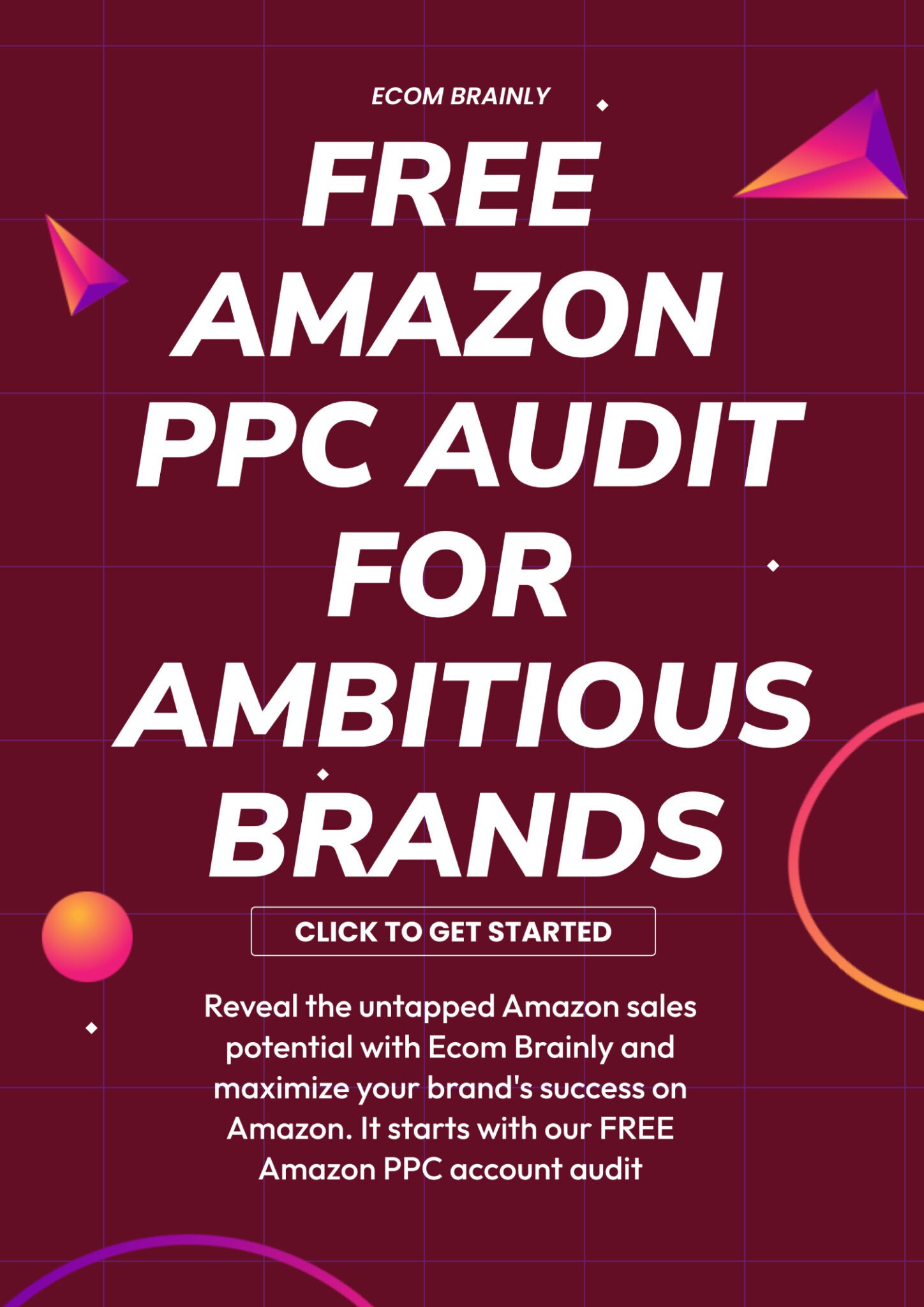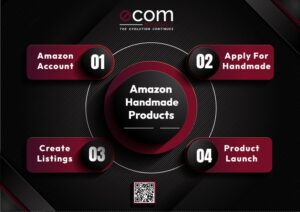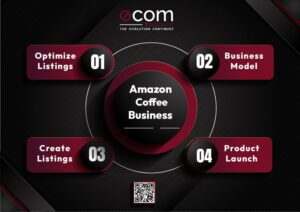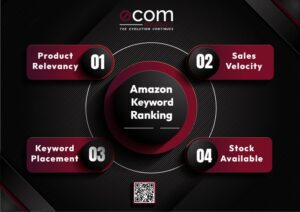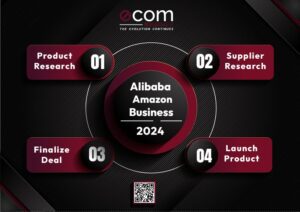Ultimate Amazon PPC Strategy 2025: Proven Techniques for Maximum ROI

Introduction
The landscape of Amazon advertising is more competitive than ever. The influx of new sellers, combined with the rising cost-per-click (CPC) rates, has made managing Advertising Cost of Sales (ACOS) increasingly challenging.
With current competition on Amazon marketplace, a robust Amazon PPC strategy is no longer optional; it’s essential for maintaining stability and profitability. This article covers 16 proven strategies to help you achieve success with Amazon PPC.
You Might Be Interested In
- Advanced Amazon PPC Optimization Tips for Lower ACoS and Higher Sales
- Amazon A9 Algorithm and How It Ranks Keywords: A Comprehensive Guide
- Amazon Best Seller Rank (BSR): Everything You Need To Know About
- How to Sell on TikTok Shop (2024): 8 Easy Steps for Beginners!
- 10 Most Profitable Items to Sell on Amazon Right Now
1. Prefer SEO before PPC
Many sellers overlook a fundamental principle: PPC alone cannot drive success without an optimized listing. The primary objective of PPC is to channel traffic to your listing. Hence, prioritizing SEO before launching Amazon PPC campaigns is crucial.
Ensure that your product titles, bullet points, descriptions, alt text, A+ content, and backend search terms are rich with relevant keywords. High-quality images and A+ content can significantly enhance the conversion rate of your listings, making them more appealing to potential buyers.
Focus on creating clear, concise, and compelling copy that highlights the benefits and unique selling points of your products.
2. CTR - Easy Way to Increase Sales
According to Amazon’s A10 algorithm, Click-Through Rate (CTR) is a top ranking factor in 2024. A higher CTR signals that your ads are relevant and engaging to your target customers. The main image plays a crucial role in boosting CTR, along with the title, price, and special offers like deals or coupons.
Consider using multiple main images and A/B testing them with tools like PickFU. Additionally, utilize Amazon’s Manage Experiments feature to test different versions of your main image. This can help you identify the image that drives the most sales for your product.
3. Improve Conversion Rate
Optimizing your conversion rate is vital for maximizing the effectiveness of your Amazon PPC strategy.
Review your product listings to ensure they are fully optimized, including highly optimized product title, competitive pricing, reviews and ratings, high-quality images, and detailed product information. Utilize Amazon Brand Story feature and Enhanced Brand Content (EBC) or A+ Content to provide additional details and enhance the shopping experience, which can lead to higher conversion rates.
Consider this scenario: you have a product with a 20% conversion rate, meaning you get 20 sales for every 100 clicks. If you improve your conversion rate to 22%, those same 100 clicks will yield 22 sales, with no additional spending.
4. Tracking ACoS vs TACoS
Understanding and tracking Advertising Cost of Sales (ACoS) versus Total Advertising Cost of Sales (TACoS) is crucial for a successful Amazon PPC strategy. ACoS shows how efficiently your ad spending generates sales, while TACoS gives a broader view of how your ads impact overall sales.
Here’s why it matters: Imagine your ACoS is 100%, meaning you spend the same amount on ads as you earn in sales. If your organic sales—those without ads—are higher, you can still turn a profit. On the other hand, if your ads drive more sales than your organic efforts, a 50% ACoS might mean you’re losing money.
So, instead of relying solely on ACoS, consider TACoS as your main indicator of profitability on Amazon. It gives you a clearer picture of how your advertising investments affect your entire business.
5. Account Level vs Product Level PPC Optimization
When optimizing your PPC campaigns, should you focus on the account level or product level? It might seem convenient to apply optimizations across your entire account using bulk files and macros with a single click. However, many sellers make the mistake of treating their entire account as one product.
If you sell products across various price ranges, each product will have different target metrics. Not every product can be expected to convert after the same number of clicks. For instance, turning off keywords after 20 clicks for a $50 product may not be effective for optimizing higher or lower-priced items.
That’s why it’s crucial to differentiate between account-level and product-level optimization strategies. Tailoring your approach based on each product’s unique characteristics and performance metrics ensures more effective and targeted PPC management.
6. Try Every Available Ad Type
Amazon provides several types of ads, such as Sponsored Products, Sponsored Brands, and Sponsored Display ads. To optimize your Amazon PPC strategy, it’s crucial to explore all these ad types and determine which ones deliver the most effective results.
Many brands tend to focus exclusively on one ad type, investing significant sums without exploring other options. However, each ad type offers distinct advantages and can effectively target various stages of the buyer’s journey. Diversifying your ad portfolio enables you to enhance visibility and boost sales by reaching different segments of your target audience.
7. Utilize Match Types
Including various match types in your Amazon advertising strategy can greatly improve your ad targeting effectiveness. Broad match reaches a wide audience, phrase match targets specific phrases, and exact match focuses on precise queries. Sponsored Products campaigns using broad and phrase match types are often overlooked, yet they typically yield the lowest ACOS.
By strategically employing these match types, you can enhance the relevance and efficiency of your ads, ultimately boosting your campaign’s effectiveness.
8. Right Way to Optimize Bids
Optimizing your bids is crucial in your Amazon advertsing strategy. Instead of blindly increasing your bids across the board, focus on increasing bids for placements with the lowest ACOS. This targeted approach can actually help reduce your overall ACOS.
When aiming to improve rankings, prioritize placements that show the best conversion rates, even if their ACOS is slightly higher. This strategy pays off because higher rankings lead to more organic orders and ultimately lower TACOS, which is key for sustainable long-term success.
It’s important to note that lowering ACOS isn’t just about adjusting bids—it requires ongoing review and adjustment. Amazon Ads experts exist because effective bid management involves continuous monitoring to ensure competitiveness without unnecessary spending.
9. Campaign Bidding Strategy
Are you finding it challenging to optimize your Amazon PPC campaigns? Adjusting bids without achieving your desired results? The key to success lies in your bidding strategy! Think Amazon’s advertising bidding strategies are as puzzling as assembling furniture without instructions?
Here’s a breakdown of different bidding strategies:
Fixed Bids:
-Ideal for gaining impressions
-Suitable for new products or strict budgets
-Beware of overspending on clicks
Dynamic Bids – Down Only:
-Controls ad spend effectively
-Best for campaigns with high ACOS
-Not recommended for increasing traffic
Dynamic Bids – Up and Down:
-Boosts sales effectively
-Suitable for well-optimized campaigns
-Consider switching if not meeting goals
Rule-Based Bidding:
-Eliminates guesswork from bidding
-Use for achieving specific RoAS goals
-Not suitable for new or unstable campaigns
Actionable Tips:
-Analyze your campaign’s needs and select the appropriate strategy.
-Regularly monitor and adjust your bids for optimal performance.
-Don’t hesitate to switch strategies if one isn’t delivering – adaptability is crucial for success.
10. Negative Keyword Targeting
Including negative keyword targeting is crucial for refining your Amazon PPC strategy and ensuring your ad spend isn’t wasted on irrelevant searches.
By identifying keywords that aren’t converting, you can add them to your negative keyword list, preventing your ads from appearing in these searches.
A good rule of thumb is to consider adding a keyword to your negative list if the spend on that keyword is half of your product’s price.
This approach effectively reduces wasted ad spend and improves the efficiency of your PPC campaigns.
11. Single Keyword Campaigns
Single Keyword Campaigns (SKCs) are a powerful tactic for isolating high-performing keywords and dedicating a specific budget to them. Create single keyword campaigns for your top 3 to 5 most relevant keywords.
By focusing on one keyword per campaign, you can closely monitor performance and make precise bid adjustments. This strategy allows for better control and optimization, ensuring your top keywords get the attention and budget they deserve.
12. Have Proper Campaign Structure
A well-organized campaign structure is crucial for a successful Amazon advertising strategy. Your PPC campaign should include one ad group with one match type and a maximum of 5 to 10 keywords.
Brands often have campaigns with hundreds of keywords, but only the top keywords consume the budget, leaving nothing for the rest.
To streamline management, name your PPC campaign clearly, such as “Campaign Type | ASIN | Keyword Source | Match Type | Campaign Purpose.” This structure simplifies management, enhances tracking, and allows for more effective budget allocation.
13. Regular Review of Search Term Reports
Regularly reviewing your Search Term Reports is essential for refining your Amazon advertising strategy. These reports reveal the exact search terms customers use to find your products.
Each week, analyze these reports to identify high-performing keywords and incorporate them into new dedicated campaigns.
Additionally, look for keywords that spend too much without generating sales and adjust them accordingly. This ongoing review helps keep your ads relevant and competitive.
14. Improve Organic Ranking
Boosting your organic ranking on Amazon is essential for a well-rounded advertising strategy.
Higher organic rankings increase visibility and sales without extra ad spend. One effective way to improve keyword rankings is by using single keyword Sponsored Products Exact campaigns.
Start by targeting keywords that are positioned on the second page or at the bottom of the first page. Once these keywords improve, focus on keywords beyond the second page.
Prioritize keywords with high conversion rates, as they tend to rank faster than those with lower conversion rates.
15. Amazon DSP Advertising
Amazon DSP (Demand-Side Platform) offers advanced advertising capabilities that go beyond traditional PPC. With Amazon DSP, you can programmatically buy display, video, and audio ads both on and off Amazon.
This platform allows for sophisticated audience targeting based on demographics, interests, and behaviors. Integrating Amazon DSP into your advertising strategy can enhance brand awareness and drive sales through a more comprehensive approach.
16. Experimentation is Key to Success
Constant experimentation is vital for staying ahead in the competitive world of Amazon advertising.
Test different ad types, targeting options, and bidding strategies to discover what works best for your products. Regularly analyze performance data and make adjustments based on your findings.
Continuously audit your PPC account to keep your Amazon advertising strategy dynamic and effective.
Share This Article

About Ecom Brainly
Ecom Brainly – A Full-Service Amazon agency that focuses on Sustainable Growth and Profitability for Our Partners (clients).
We been selling on Amazon since 2017 and has had to adapt for every change that Amazon has made along the way. Amazon is an ever changing marketplace and Ecom Brainly has his team ready to handle any and every challenge.
Is your brand having challenges with growth, profitability, advertising, reporting etc – If yes, please contact us today!
